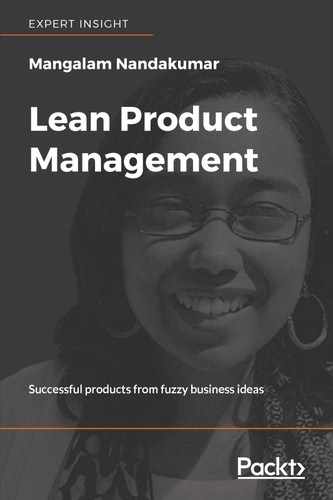The following representation shows the stages of product development for creating our Impact Driven Product:

We have initiated our first step in the product development. This first step is Invest in Key Business Outcomes. At this stage, the business indicates an inclination to build a solution that will impact certain business outcomes. Now, we may be able to build some functionality in this solution faster and therefore we can meet outcomes sooner. Some other functionality may take longer to build and may take a longer time to meet outcomes. We may have to make conscious technology and experience trade-offs to meet time-bound priorities.
As we iterate through the build-measure-learn loop of the product, it is likely that we will discover customer insights, feedback, gaps in product experience, and so on.
Product teams should not answer this questions in isolation. Since a product's success influences business outcomes (and vice versa), it is important to understand what risks, trade-offs, and goals the business is willing to consider. These decisions influence how business functions and product development should spend their resources. We could, of course, ask for different priorities on a case-by-case basis. However, it will be ineffective to look at a bunch of disparate data, insights from live functionality, and a backlog of potential functionality and then prioritize without context.

This is same comparison that Jeff Paton uses when describing how user stories are managed in a product backlog. The preceding image illustrates this perspective. He says, "We spend lots of time working with our customers. We work hard to understand their goals, their users, and the major parts of the system we could build. Then we finally get down to the details – the pieces of functionality we'd like to build… after all that work, after establishing all that shared understanding I feel like we pull all the leaves off the tree and load them into a leaf bag – then cut down the tree. That's what a flat backlog is to me. A bag of context-free mulch." (https://jpattonassociates.com/the-new-backlog/)

This is exactly what happens when we draw up a business model, then forget about the business drivers, and execute a product plan focused only on the product backlog. So, when business stakeholders are asked to prioritize a backlog without context, we can't expect to get the inputs we seek. Also, this type of prioritization (which essentially indicates the value (or ranking) that a business attaches to a product functionality or to a customer experience) cannot be quantified. Prioritization also needs to start with Key Business Outcomes and the business constraints that determine product strategy. Key Business Outcomes must be measurable.
In order to assign a value/rank to the business drivers, we need to understand what significance the business attaches to it. Instead of this being a random number or something we rank on a scale of one to ten, we can match it closely to how the business actually operates. Businesses make bets on outcomes. Each bet comes with its risk and will take a certain amount of time to reap benefits. When planning personal financial investments, to make a comparison, we're likely to plan based on our risk appetite and financial goals. This is similar to predicting a certain rate of interest/growth on our investments, at a certain time in future. Just asking business stakeholders about their investment priorities doesn't usually help, so I recommend that we play an Investment Game!
